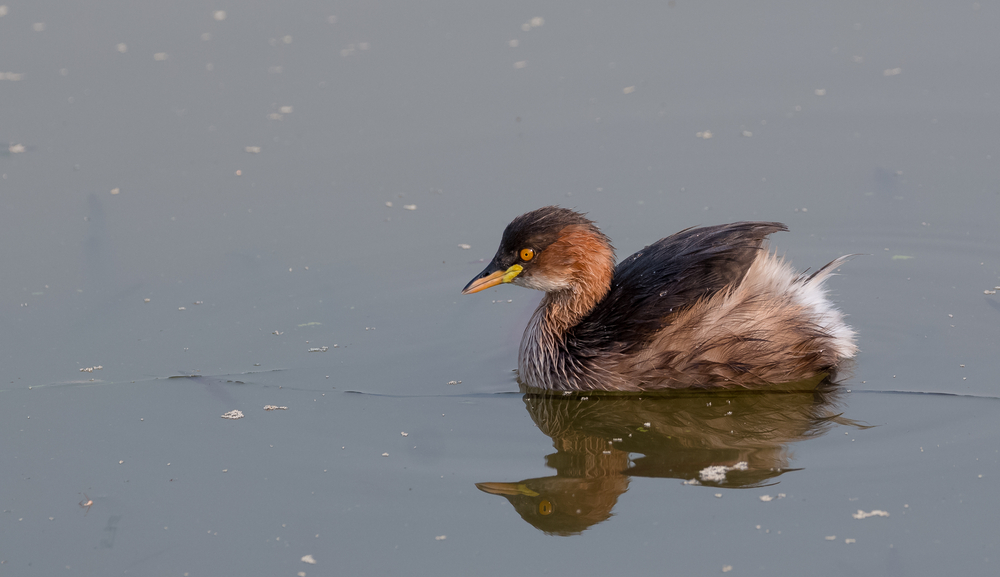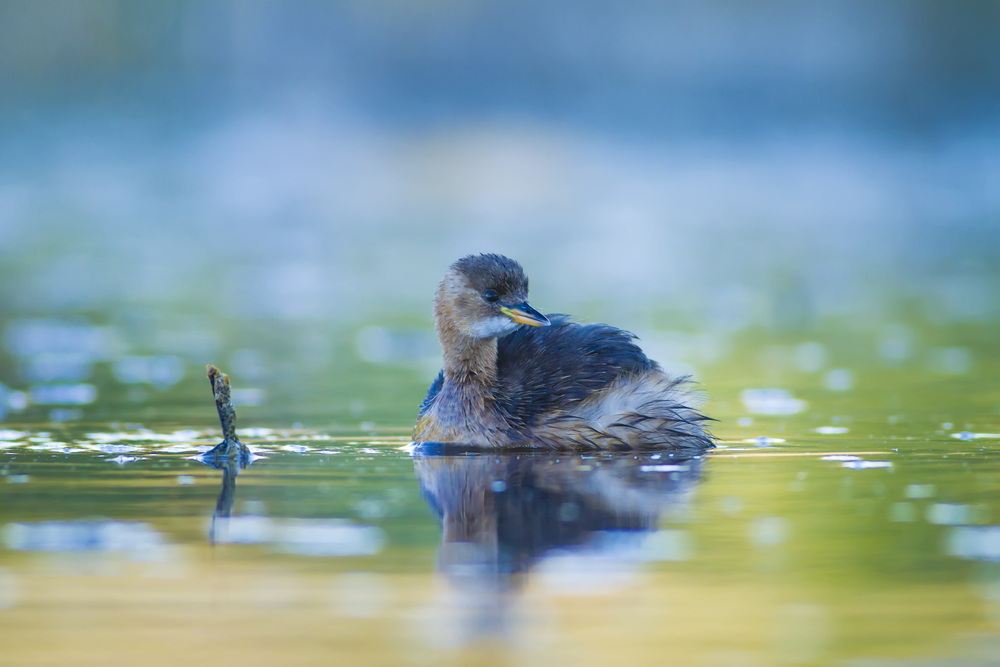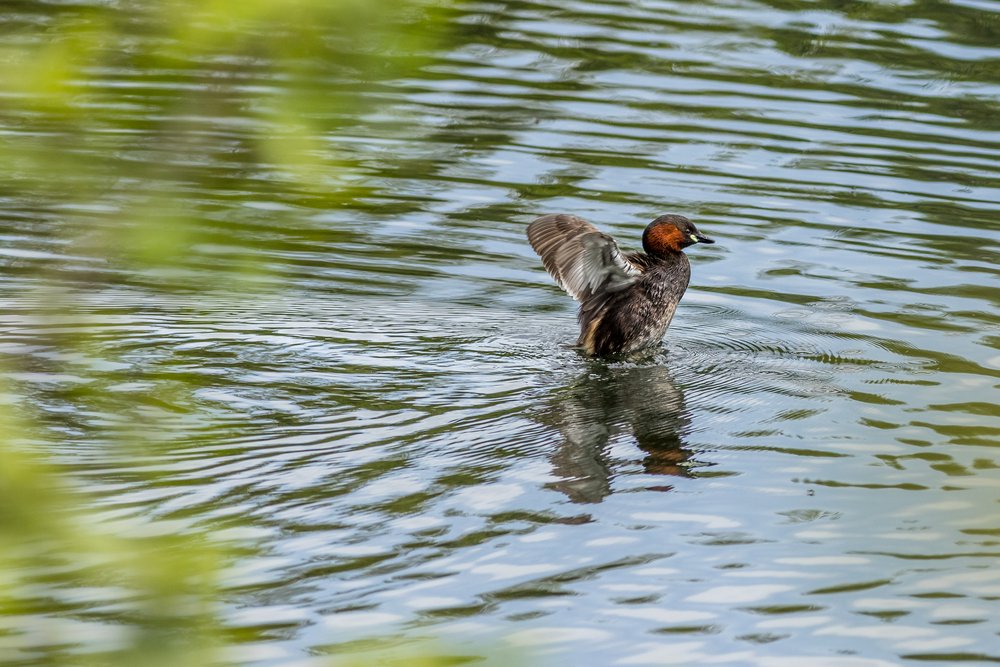The little grebe is a fascinating creature, and it’s easy to see why they are so beloved by bird watchers around the world. These small aquatic birds can be found across Europe, Asia and Africa in wetlands, rivers and lakes. While most people know about their distinctive appearance—the dark cap of feathers on top of their head—few understand the intricacies of its diet, habitat or breeding habits. In this article we’ll explore these topics further as well as identify some common predators for the little grebe population. Get ready to learn more about one of nature’s greatest gifts!
How To Identify a Little Grebe
The little grebe (Tachybaptus ruficollis) is a small water bird that can be found in Europe, Asia and Africa. It measures between 24-27 cm in length with a wingspan of around 42 cm. Its plumage is mostly dark brown above and white below, with some black on the back of its neck and head. The bill is yellowish-orange, while the legs are greenish-yellow.

One of the most distinguishing features of this species is its bright red eyes which contrast sharply against its dark feathers. Additionally, it has a long pointed bill which helps it to catch fish underwater as well as other aquatic prey such as crustaceans and molluscs.
During breeding season, they may also have some yellow patches on their cheeks or throat area, making them easier to identify.
Little Grebe Diet

The little grebe feeds mainly on aquatic insects such as midges, mayflies, caddis flies and dragonflies. They will also feed on crustaceans like shrimps and molluscs like snails. In addition to these invertebrates, they will eat small fish such as minnows or sticklebacks.
Little grebes can be seen diving underwater to catch their prey which they swallow whole without chewing it first. They have specially adapted feathers that allow them to dive quickly with minimal resistance from the water. During winter months when food is scarce, they are able to store fat reserves in their bodies which helps them survive until spring arrives again, bringing more food sources for them to hunt for.
The best places for spotting a little grebe would be shallow lakes, ponds or marshes where there is plenty of vegetation present providing cover from predators while still allowing access to open waters where hunting takes place most effectively. This abundance of food sources during breeding season is essential for the little grebe in order to obtain enough energy and successfully raise its young.
Habitat Of The Little Grebe

Little grebes prefer shallow freshwater habitats such as lakes, ponds, marshes and slow-moving rivers. They are often seen swimming near the shoreline or floating on the surface of the water with their heads just above it.
In winter they can be found in coastal waters where there is an abundance of food available to them. During this time they may form large flocks along with other species, such as coots and ducks. In summer months, they will move inland to breed in areas that provide plenty of vegetation for nesting sites and protection from predators.
When breeding season arrives these birds build nests amongst reeds or tall grasses close to shorelines where there is plenty of cover from predators like foxes, cats and crows, which could threaten their young chicks if left unprotected out in open waters away from land-based coverings.
Little Grebe Predators
This water-loving species is particularly vulnerable to predation from larger birds such as herons and cormorants. In addition to these avian predators, the little grebe can be preyed upon by mammals such as foxes and cats that hunt near bodies of water.
Reptiles are another potential predator for this species; snakes like grass snakes or adders may attempt to catch a little grebe if it strays too close to shore. The same goes for amphibians like frogs or newts, which may ambush unsuspecting individuals while they feed on insects in shallow waters.
Invertebrates are yet another threat; dragonflies, damselflies and other large aquatic insects have been observed preying on adult little grebes when given the opportunity. Even smaller invertebrates such as leeches or flatworms can present danger if they attach themselves onto an individual’s body while swimming through murky waters.
Finally, fish should not be discounted either; pike and perch have been known to take advantage of unsuspecting birds that come too close during their search for food at night time or early morning hours when visibility is low underwater due to darkness or foggy conditions respectively.
Breeding Habits

It typically nests close to the water’s edge in areas with dense vegetation such as reed beds or marshes. Breeding usually takes place between April and August, although it can vary depending on the region.
Courtship Behavior
During courtship, male little grebes will perform elaborate displays of head-shaking and bill-dipping while swimming around the female. The male will also bring food items to the female as part of his display behaviour.
Nesting Habits
Little grebes build floating nest platforms made from plant material which are anchored among aquatic plants or other debris near shorelines or islands. Both parents help construct the nest by weaving together stems of grasses, rushes and sedges into a platform about 20 cm across, which floats on top of the water’s surface. They line their nests with feathers for insulation against cold temperatures and wetness from rain or splashing waves.
After mating has taken place, females lay 3 to 5 eggs at intervals over several days. Both parents then incubate the eggs for up to 25 days until they hatch out into chicks covered in downy feathers but unable to swim yet due to lack of waterproofing oil glands. These are needed for buoyancy control when diving underwater after prey items such as fish fry or aquatic insects like dragonfly larvae.
Chicks
Chicks fledge after 30-35 days, but remain dependent upon their parents for another two weeks before becoming independent enough to feed themselves without parental assistance. During this time, both adults continue providing food items such as small fish caught underwater using their feet, as well as terrestrial invertebrates plucked off nearby vegetation like spiders and beetles found amongst tall grasses along lake shores where they breed annually each summer season.
Little Grebe FAQs
Where does the little grebe live?
It prefers shallow freshwater habitats such as lakes, marshes, ponds and slow-moving rivers. In the UK, it can be found in most parts of England and Wales, but is less common in Scotland and Ireland. During winter months, some birds migrate southwards to more temperate climates.
Is little grebe a duck?
No, the little grebe is not a duck. It is a member of the Podicipedidae family and belongs to its own genus, Tachybaptus.
Is little grebe a migratory bird?
Yes, the little grebe (Tachybaptus ruficollis) is a migratory bird. It breeds in much of Europe and western Asia, as well as parts of North Africa. During winter months it can be found in southern Europe, northern Africa and south-west Asia. The little grebe’s migration pattern varies from year to year depending on weather conditions and food availability. It is a relatively short-distance migrant, usually travelling between its breeding and wintering grounds within the same region.
Summary
The little grebe has a unique diet, habitat and breeding habits which make it an interesting species to observe. While they are preyed upon by some animals, their population remains stable due to their adaptability and resilience. With proper knowledge about its identification, diet, habitat and predators, one can have a great time observing this beautiful creature in its natural environment.
Additional Resources
Sources and References
- Little Grebe – rspb.org.uk
- Little Grebe (Tachybaptus ruficollis) – ebird.org

Ash is a contributing author who has been writing about wildlife for as long as he can remember. He has a vast knowledge of many different types of animals, from the tiniest shrews to the great whales that live in the deepest oceans.
